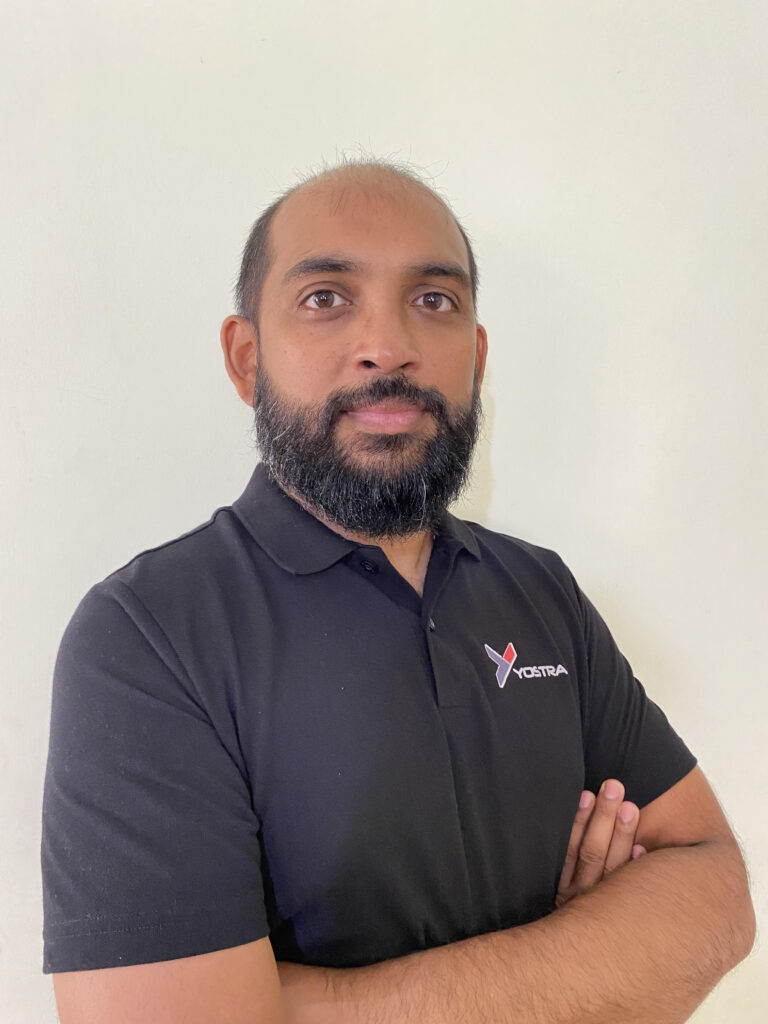Join the ASME ISHOW Americas virtual awards ceremony August 6th. Register now!

Bob Hauck
Startups can be shuffled into three categories according to their developmental levels, Bob Hauck says. He calls them “Nascent,” “Teenagers” and “OMG.” He has tips for navigating each stage, drawing on expertise from a decade advising ventures in the American Society of Mechanical Engineers ISHOW accelerator and nearly four decades at GE. At GE, Mr. Hauck led global engineering teams and shaped mechanical design strategy for healthcare devices. Since retiring as GE Healthcare’s Chief Mechanical Engineer, he has served as a consultant, expert witness, Director of the Imagineering-Foundation and ASME ISHOW expert advisor. He also serves on several ASME committees, including Engineering for Sustainable Development.
Early into their foray in product development, designers and engineers can use a quick checklist Mr. Hauck has written up, The Bare Minimum Checklist for a Viable Product. It’s a working checklist, not intended to be comprehensive, and it is aimed at people starting out in product development.
Read More: This Is the Bare Minimum Checklist for a Viable Product
Mr. Hauck has spent the past months advising the ventures selected in ISHOW 2024 to join the accelerator. We asked him for his insights into common issues, stumbling blocks, trends and tips he has for ventures developing hardware products today. And for founders reading this, Mr. Hauck has offered his personal email in case he has advice that can help: hauckrobertb (at) gmail.com.
E4C: What are some common challenges that startups face in the ISHOW bootcamp?
BH: Stages: “Startups” come in several flavors – with different needs. All must develop and eventually function within their own context.
- There’s the “Nascent” startup that is at the very earliest stages of development. They might have a kernel of a ‘good idea’ or a concept that might satisfy some ‘user needs’ but must evolve.
- Then there’s the “Teenager” startup. These guys have a concept that they are developing and likely have built some sort of model or prototype in a lab. They always want to know ‘how can I scale?’. These teams think that they are much further along the path to an actual product than they are. Reality is difficult for them. As with some teenagers, they believe they know more than they do.
- The next level of startup is the “OMG” teams that are just starting to realize how difficult it is to address the scope of work involved to establish, develop and manage a successful business.
Context: Startups vary by location/geography, knowledge, skills, individuals, time, culture, environment and other factors. And they vary according to lots of ‘soft skills,’ such as leadership, energy levels, commitment, communications, maturity, discipline… and in some cases even integrity.
As you might imagine, the needs of a team trying to develop a pediatric pneumonia diagnostic aid medical device are very different from a team trying to develop a process to recycle plastic bottles into paving blocks.
Here are several examples from my 10 years of ISHOW judging and bootcamp involvement (I didn’t use their team names).
A Nascent Example: One of the interesting but scary things that happened during the early stages of the Covid-19 pandemic was everyone trying to develop some sort of respiration assist device. These pseudo-ventilators were being designed by everyone from the Dyson Vacuum cleaner business to several well-known and very respected universities. Their designs ranged from squeezing
soccer ball bladders to air pumps and plastic bags or even helmets.
We had regressed to the age of snake-oil and cure all elixirs. With almost all medical device ISHOW teams they need to understand that the environment and requirements for a medical device are very well defined and controlled. There are Standards, Quality Management Systems and Processes that are required. The ‘prototype’ model that they have constructed from plywood and a soccer ball might be some sort of ‘concept demonstration’ model at best.
A Teenager Example: Since these teams are almost always inexperienced, they “don’t know what they don’t know” or at least should or need to know. Several years ago, I developed a list that I called “The Bare Minimum”. It is a heuristic that defines the very least that these teenage teams need to know. Most of these teenage teams are using a “ready, fire, aim” method that misses both the theory
and practice of wat one must do to create a product. I would ask some very basic questions like “do you have a bill-of-materials?” Or “do you have a specification?” Or “do you have a verification test plan?” Unfortunately, some of these teams look at these essential elements as “bureaucratic paperwork”. As with most things, if you don’t have a plan and some sort of ‘roadmap’ to get to where you want to go, you will probably end up somewhere else – or nowhere at all.
The OMG guys: These are the teams who have slogged their way out of teenage angst and are now realizing the complexity of the task they have taken on. The example that I like to use here (and I will break my anonymity rule here) is Shivang Dave and the PlenOptika team. Their handheld auto-refractor was a 2017 ISHOW winner.
Read More: Fellow Visionaries (Plenoptika’s origin story in DEMAND magazine)
The help that ISHOW provided to Shivang and his team got him started in the right direction with coaching about Integrated Program Planning, Product Specifications, Verification and Validation testing; and hung with him and his team as they created assembly instructions, test specifications, user manuals and a robust service support methodology.
Commonalities: Research what customers, regulations and laws might require. All product development involves a rigorous defined process – which may or may not be required by regulation and/or law. Make sure you have an integrated plan that describes what needs to happen in sequence and highlights interdependencies for all activities/parts of the product development to come together.
E4C: What piece of advice do you often find yourself giving to startups?
BH: The advice that I give most to startups takes the form of asking them questions. I believe that most advice that starts with words like “You should…” or “You need to…” activates the deafness response. I choose to ask things like “How do you plan to assemble the product? Will you have a factory, will you use a subcontractor, what’s your supply chain and manufacturing strategy?”
If my question is met with a blank stare and they seem unsure, I can anticipate their needs and guide the conversation accordingly.
E4C: What separates the most successful hardware startups from those that struggle?
BH: All startups struggle. Some get through and others collapse. Of course, that’s true not for just startups but for most things in life.
In my view, leadership and resilience are the two most important characteristics. These fundamentals are built on credibility, trust, teamwork, persistence, lots of energy and a willingness to listen to all viewpoints.
Ignorance can be overcome with effort and patience. Failure should be synonymous with “Learning.” Expectations need to be wisely managed. Keep your priorities in the right order.
We all have one life, so let’s try not to waste it.
E4C: What mistakes do hardware startups make in their approach to manufacturing and scaling, and how can they avoid them?
BH: Hardware is difficult. Recognize that. You’re not creating some abstract Tik-Tok influencer website. You’re creating something physical, tangible and real. You will be consuming physical resources, energy and time.
I would like to do away with the term “scaling.” It implies that because you got one model or prototype of something to work one time in a controlled/laboratory environment, that you simply have to figure out how to make a thousand more. That’s not the way this works. While a small volume, time consuming, costly, flexible process like 3-D printing of some plastic material might be fine to produce one, ten or even a hundred parts for your device. If you want to build thousands you will likely need to buy tooling, change your design to reflect draft angles, parting lines on your hold, revise tolerances that are consistent with your new process.
For the structure of your device will you manually weld together tubing and plates or should you switch to some type of casting process? The design of the product and the process used to manufacture it must move forward hand-in-hand. Having someone create a design in an ivory tower and then “throw it over the wall” to someone else to build has never and will never work.
E4C: What best practices can early-stage startups adopt to improve designs and manufacturing processes for global markets?
BH: To truly design and manufacture a product for a global market one must thoroughly and accurately understand the requirements and context of that product in that market. There is no one “Generic Global Market.”
When I was at GE Healthcare, we would look at the different market segments around the world. Markets are not typically defined exclusively by geographies or prices. Take CAT Scanners as an example. The requirements of the prestigious research medical school exploring new medical frontiers is quite different from the urban health center and yet again different from the smaller rural hospital. There is no “one size fits all” global product. The top tier scanner in Berlin is the same top tier scanner in Boston and Beijing. But that fully featured, expensive product isn’t what the rural customer in developing markets is looking for.
The best way to understand what the user needs is to go where the user is, live there, recognize what constraints society might place on the product, observe what people do and how they live. Consider trying to find a local partner who already understands the needs of the market. While some customer requirements in diverse markets might be comparable – for example South America and Eastern Europe share some similarities.

